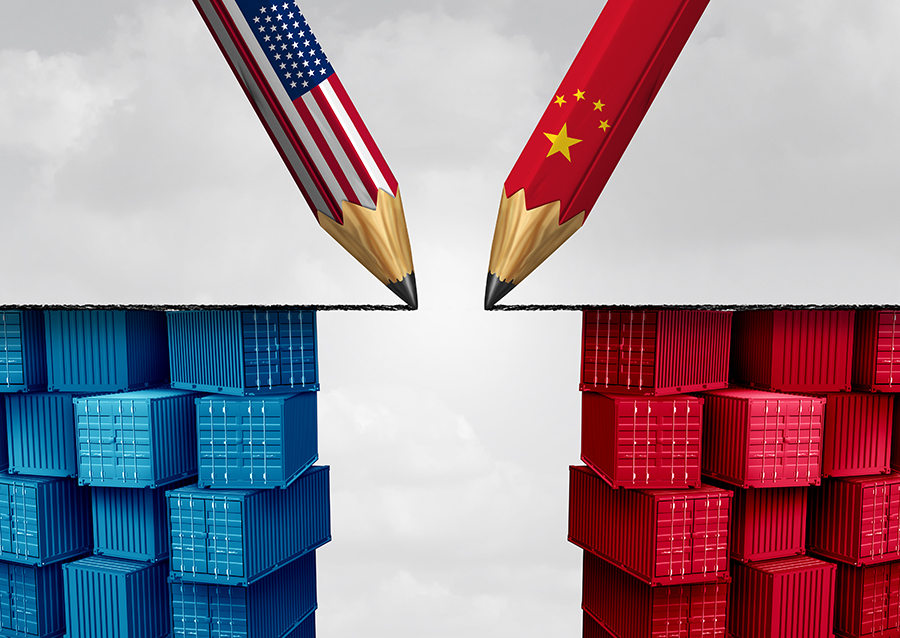
The Office of the United States Trade Representative recently released its 2021 Report to Congress on China’s WTO Compliance and 2022 National Trade Estimate Report, coinciding with the assertion to Congress by Trade Representative Katherine Tai that the U.S. should curb any Chinese economic behavior that “undermines” U.S. interests. It suggests that a new strategic framework for trade with China in the Biden administration is taking shape.
In both documents, the U.S. discredited China’s efforts and progress made since its accession to the WTO, as well as its compliance with the first phase of the bilateral trade agreement. And it threatened more severe sanctions against China. In fact, the Biden administration’s trade strategy with China has not deviated from the “America first” doctrine of the Trump era. American interests and America first are deeply rooted in the U.S. economic and political DNA. It is ever more clear, judging by the Biden administration’s trade strategy with China, that the U.S. government’s long-standing conduct is benchmarked by the sole purpose of serving its own national interests.
It can be drawn from the latest developments that the new U.S. trade strategy with China, in essence, is to maintain pressure on the country while seeking dialogue, and to stay focused on competition or even confrontation in core areas.
First, the Biden administration is pursuing a selective adjustment of U.S. tariff policy in a way that reduces its own economic costs. The administration has not abandoned the destructive tariff policies of the Trump era, but it has reassessed the hefty costs of a tariff war. Since Trump launched the Section 301 investigation and tariff war against China, the U.S. has imposed four rounds of tariff hikes. By the end of last year, the total value of goods subject to tariff hikes tallied $370 billion, with rates varying from 7.5 percent to 25 percent. However, the U.S. deficit with China has risen rather than fallen. In 2021, its trade deficit with China increased by 25 percent over the previous year to $396.6 billion.
According to U.S. Customs and Border Protection American importers paid nearly $123 billion to cover extra tariff costs since 2018. The Section 301 tariffs on Chinese imports to the U.S. have had a sweeping impact on U.S. businesses in manufacturing, agriculture, fishing, retail, energy, technology and services. In particular, they hit small and medium-sized enterprises hard, as they are less equipped to absorb the cost.
A report released by the U.S. Chamber of Commerce in China and the Rhodium Group, said that if the existing 25 percent tariffs were expanded to all two-way trade, it would cost the U.S. $190 billion per year in output by 2025 and $250 billion per year by 2030. The U.S. economy stands to come up $1 trillion short of its potential growth over the coming decade after full tariff implementation.
Based on the reassessment of the tariff war and an attempt to reduce self-inflicted costs, the U.S. Department of Commerce released a list of tariff exemptions involving about $61.9 billion of goods, mainly covering the electrical equipment, machinery, light manufacturing, basic chemicals, textiles and apparel industries. The volume of the 352 items the U.S. imported from China shows that this slice of goods is the most dependent on supply from China and account for about 21 percent of the total tariffs imposed under the Trump administration ($287.8 billion in 2021) and about 12 percent of China’s total exports to the U.S. ($536.1 billion in 2021).
The second indicator is Biden’s tactical shift from full decoupling to precision decoupling and a “targeted crackdown.” The new trade strategy implies a tougher hand with China. On one hand, the U.S. administration has adopted large-scale industrial subsidies, implementing measures such as rental tax incentives for industries and consumers, financing, government procurement, investment in R&D and manufacturing, among others.
The government-led industrial policy has made a comeback in full force. On the other hand, the crackdown on China’s technology extends to upstream sectors and then gradually to the entire technology ecosystem. Economic sanction tools, such as joint and coordinated deployment of export control measures, foreign investment security reviews, telecommunications licensing reviews and other targeted sanction tools have been deployed.
Third, a three-pillar approach — underpinned by partnerships with allies, a multilateral system and values diplomacy — has been adopted. The Biden administration has now replaced the tariff weapon with a new trade weapon that is empowered by a united values front, technological dominance and multilateral economic and trade rules.
To ensure its dominance in key technology areas, the U.S. has also expanded the Wassenaar Agreement and co-opted Europe to establish the Transatlantic Trade and Technology Council (TTC), which is aimed at creating an Indo-Pacific economic framework to build supply chains and technology alliances that will reduce the Chinese presence and bring comprehensive coordination over basic R&D, talent exchanges, technology standards, supply chain flexibility, norm setting and key technology policies.
The new U.S. trade strategy for China indicates further pressure on China for so-called non-market trade practices and structural reforms. And further actions may be expected to secure new breakthroughs around industrial subsidies, SOE reforms, intellectual property protection, neutral competition, digital trade and other important issues to form a “coalition of issues” to put pressure on China. Recently, the U.S. has been actively promoting trilateral coordination with Japan and Europe against China.
The Biden administration’s new strategic framework for trade with China may not be more effective than Trump’s. But it is imperative to build a “moat” that avoids harm to the important interests of both sides, and to strive for new engagement consensus. As things stand now, the window of opportunity is closing fast.
